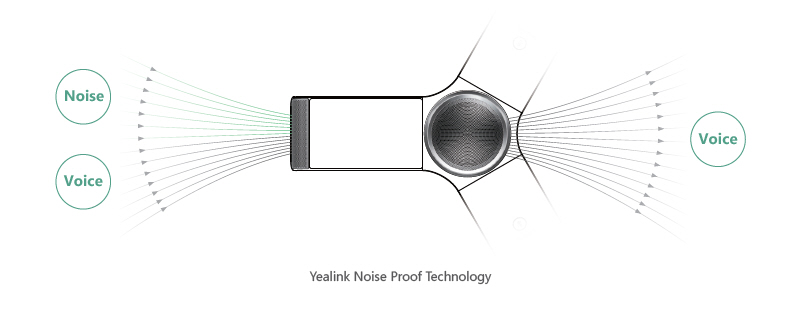Introduction
In today's digital landscape, businesses are constantly seeking better communication technologies to enhance their operations. Among the most effective solutions is the Voice over Internet Protocol (VoIP) phone system. With VoIP, organizations can achieve significant cost savings while enjoying high-quality voice communications. However, to truly maximize the potential of your VoIP phone systems, it's essential to focus on call quality. This is where Session Initiation Protocol (SIP) trunking comes into play.
SIP trunking not only improves voice clarity but also enhances reliability and scalability for VoIP phone systems. In this article, we will explore how SIP trunking can significantly enhance call quality in your VoIP phone system, offering insights into its functionality, benefits, and implementation strategies.

Understanding VoIP Phone Systems
What is a VoIP Phone System?
At its core, a VoIP phone system converts voice communications into digital signals that travel over the internet. Unlike traditional telephone lines that rely on copper wires, VoIP utilizes broadband connections to transmit calls. This technology has revolutionized business communication by providing a flexible and cost-effective alternative.
Key Components of VoIP Phone Systems
VoIP Phones: These devices are specifically designed for making calls over the internet. VoIP Gateways: They connect traditional telephones to the VoIP network. Session Border Controllers (SBCs): SBCs manage and secure voice traffic between different networks. Softphones: Software applications that enable users to make calls from computers or mobile devices.Benefits of Using a VoIP Phone System
- Cost Efficiency: Reduced long-distance call costs and lower equipment expenses. Flexibility: Enables remote work and mobility for employees. Scalability: Easily add or remove lines as business needs change. Advanced Features: Access to voicemail-to-email services, call forwarding, and conferencing tools.
Enhancing Call Quality in Your VoIP Phone System with SIP Trunking
What is SIP Trunking?
SIP trunking is a method used in modern telecommunication systems that allows voice calls to be made over the internet instead of traditional phone lines using SIP protocol. Essentially, it connects your existing PBX (Private Branch Exchange) system directly to an Internet Telephony Service Provider (ITSP).
How Does SIP Trunking Work?
Establishes Connections: The SIP protocol establishes connections between endpoints by signaling when calls start and end. Transmits Calls: With SIP trunks, multiple calls can be transmitted simultaneously over a single connection. Manages Sessions: It manages voice sessions through IP networks ensuring efficient communication flow.Why Choose SIP Trunking for Your VoIP Phone System?
Choosing SIP trunking can lead to improved call quality through enhanced bandwidth utilization and reduced latency during calls. By optimizing these factors, businesses can experience clearer conversations without interruptions.
Factors Influencing Call Quality in VoIP Phone Systems
Bandwidth Availability
Adequate bandwidth is crucial for maintaining high-quality voice calls without delays or dropouts. Insufficient bandwidth can lead to packet loss and jitter – both detrimental to call quality.
Network Latency
Latency refers to the delay before data begins transferring after a request has been made. High latency can cause noticeable lags during conversations which may frustrate users.
Jitter Management
Jitter occurs when packets arrive at varying intervals leading to choppy audio during calls. Effective management of jitter is essential for consistent call quality.
Packet Loss Considerations
When data packets fail to reach their destination during transmission, it results in packet loss which severely impacts audio clarity.
Implementing SIP Trunking for Enhanced Call Quality
Assess Your Current Infrastructure
Before implementing SIP trunking into your VoIP phone system, evaluate your current telecommunications infrastructure including network capabilities and bandwidth availability.
Choose the Right Provider
Selecting a reliable SIP trunk provider is critical for ensuring optimal performance:
- Research providers with strong reputations Look for those offering robust customer support Compare pricing models thoroughly
Prioritize Network Configuration
Proper configuration of your network can greatly influence call quality:
Set up Quality of Service (QoS) settings to prioritize voice traffic. Implement VLANs (Virtual Local Area Networks) dedicated solely for voice traffic. Regularly monitor network performance metrics.Common Challenges with SIP Trunking Implementation
Integration Issues with Existing Systems
Integrating new technologies with legacy systems can present challenges such as compatibility issues or increased complexity in managing systems together.
User Training Requirements
Employees may require training on new features introduced by SIP trunking which could temporarily disrupt workflow during transitions if not managed well.
Monitoring Call Quality with Analytics Tools
To ensure optimal performance post-implementation of SIP trunking:
Use analytics tools that provide real-time monitoring of call quality metrics like MOS (Mean Opinion Score). Set up alerts for unusual patterns indicating potential issues affecting call clarity or connectivity. Regularly review performance reports generated by these analytics tools for ongoing improvements in service delivery.Best Practices for Maintaining High Call Quality
To maintain high-quality communications continuously:
- Conduct regular assessments on your network’s performance. Update hardware such as routers and switches as needed based on technology advancements. Engage staff in periodic training sessions focusing on maximizing use of available features within their VoIP phone systems related to improving call experiences.
Future Trends in VoIP and SIP Technologies
As technology continuously evolves so does our understanding around enhancing telecommunications through innovations like AI-driven applications improving predictive dialing capabilities coupled alongside emerging standards ensuring security measures keep pace with growing concerns over data breaches compromising sensitive information shared via these mediums!
Conclusion: Elevate Your Communication Game!
Enhancing call quality in your VoIP phone system with SIP trunking isn't just about upgrading technology; it's about creating robust communication channels that foster productivity within an organization while delivering seamless customer experiences outside its walls where every conversation counts! As we move forward embracing this transformative shift towards more integrated solutions across various sectors—embracing change positively remains key!
FAQs
Q1: What are some common problems encountered when using a VoIP phone system?
A1: Common issues include poor audio quality due to insufficient bandwidth, latency resulting from slow internet connections or outdated hardware configurations impacting overall functionality among others!
Q2: How does QoS improve my VoIP experience?
A2: Quality of Service prioritizes voice traffic over other types of data streams aiding significantly in reducing delays thus enhancing overall sound clarity during conversations online!
Q3: Is it possible to use my existing PBX system with SIP trunking?
A3: Yes! Most modern PBX solutions support integration with various forms of telephony including those provided via different service providers utilizing Session Initiation Protocol allowing seamless interface across platforms without major disruptions during transition phases!

Q4: What factors should I consider before choosing a provider?
A4: Key considerations include service reliability & uptime guarantees offered by providers along with competitive pricing models ensuring value-for-money while still meeting unique http://deanovwc863.bearsfanteamshop.com/how-to-choose-between-on-premises-and-cloud-based-voip-solutions organizational needs effectively without compromising on quality levels expected from any telecommunication setup utilized within workplace environments today!
Q5: Can I maintain my own network while using third-party services like those offered through cloud-based platforms too?
A5: Absolutely! Many organizations benefit significantly from hybrid solutions enabling them flexibility tailoring setups best suited around specific goals optimizing both operational efficiency overall whilst leveraging external support whenever necessary driving success forward collectively together moving ahead confidently embracing future opportunities emerging rapidly within this ever-evolving space!
Q6: How often should I conduct maintenance checks on my network post-Sip Trunks Integrations? A6: Ideally conducting regular monthly reviews ensures promptly addressing any arising issues immediately keeping everything running smoothly avoiding larger complications down line thereby preserving integrity throughout entire infrastructure built around effective communication practices established originally at outset itself initially
This comprehensive examination provides both foundational knowledge about enhancing call quality through advanced practices tailored specifically towards maximizing return-on-investment accrued from utilizing cutting-edge technologies available currently out there in marketplace today!